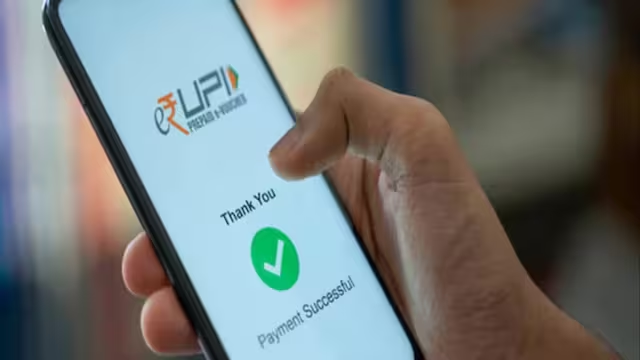In a move that aligns with the vision of Digital India, the Indian government has rolled out a major incentive to encourage cashless transactions — discounts on UPI payments. This policy change, announced as part of a broader digital finance strategy, aims to reward consumers for choosing Unified Payments Interface (UPI) over traditional cash transactions.
This is not just a win for convenience — it marks a significant push toward making India a less-cash economy, increasing financial transparency, and strengthening digital infrastructure at the grassroots level.
Let’s break down what this announcement means for consumers, merchants, and India’s digital economy.
📲 What Is UPI and Why Does It Matter?
Unified Payments Interface (UPI) is a real-time payment system developed by National Payments Corporation of India (NPCI) that allows users to instantly transfer money between bank accounts using a mobile device. Launched in 2016, UPI has revolutionized how India transacts — from local kirana stores to online platforms.
UPI’s key advantages include:
- Zero transaction cost for users
- 24×7 availability
- Instant settlement
- Interoperability across banks and apps
With over 12 billion transactions processed monthly, UPI has become India’s digital payment backbone.
💡 What’s the New Announcement?
The Government of India, through the Ministry of Electronics and IT (MeitY) and the NPCI, has proposed offering discounts or cashback on UPI transactions across various sectors including:
- Retail payments
- Petrol pumps
- Public transport
- Utility bills
This initiative is aimed at:
- Reducing dependence on cash
- Supporting small merchants in adopting digital payments
- Encouraging citizens to use UPI for even the smallest of transactions
The policy is expected to be implemented in partnership with leading banks, UPI apps (like PhonePe, Google Pay, Paytm) and government agencies.
🎯 Who Will Benefit from UPI Discounts?
This initiative is designed to benefit a wide range of stakeholders:
1. Consumers
- Shoppers and commuters can enjoy small discounts or cashback offers on every UPI transaction.
- In rural areas, where digital adoption is still growing, incentives will encourage more users to switch to mobile payments.
2. Small Businesses
- Kirana stores, vegetable vendors, and small-scale service providers will see increased digital footfall.
- Government support can offset the fear of digital transaction fees and help merchants adopt QR-based UPI payments more confidently.
3. Transport and Utility Providers
- The move is expected to drive digital payments in buses, metros, toll plazas, and for electricity/water bills, reducing the hassle of cash handling.
🧾 How Will the Discount System Work?
The government has not yet disclosed the complete operational framework, but here are some expected models:
- Flat Discounts: Example — ₹5 off on fuel payments made via UPI.
- Cashback System: Cashback credited to the UPI-linked bank account or wallet.
- Lottery/Incentive Schemes: Lucky draws or monthly digital contests to reward frequent UPI users.
All these will be automated via UPI apps and integrated directly into the transaction flow, ensuring a seamless user experience.
📉 Why This Move Was Necessary
Even though India is a leader in digital payments globally, there were some challenges:
- Low digital adoption in tier-2 and rural areas
- Cash still dominant for small-ticket items
- Concerns over cybersecurity and digital literacy
By offering discounts, the government is:
- Nudging behavioral change
- Making digital transactions more rewarding
- Reducing friction in day-to-day purchases
This initiative comes as a follow-up to the 2023-24 budget allocation, where ₹1,500+ crore was dedicated to promoting digital payment adoption.
💹 UPI’s Impact on India’s Economy
The push toward incentivized UPI usage is expected to have a ripple effect on the economy:
🔐 1. Greater Financial Inclusion
Rural users who previously avoided banks or formal financial services can now access money easily via mobile phones, leading to increased savings and participation in the formal economy.
💼 2. Support for Small Businesses
Digital payments reduce cash handling costs, improve accounting, and open the doors for credit, loans, and insurance via fintech services.
🏛 3. Stronger Tax Compliance
As more payments go digital, they become traceable, reducing tax evasion and increasing GST collections.
🌍 Global Recognition of UPI
UPI is not only successful in India but is also being adopted internationally. In recent years, India has partnered with countries like:
- Singapore (PayNow-UPI)
- UAE
- France
- Bhutan
- Nepal
As UPI becomes more accepted globally, domestic incentives like discounts can further strengthen its global positioning.
🧠 Are There Any Drawbacks?
While the UPI discount initiative is promising, it’s important to consider:
- Cost to the Government: Funding discounts at scale may require ongoing budget support.
- Merchant Margins: Businesses with thin profit margins may find it hard to offer discounts unless they are subsidized.
- Overdependence on Digital Infra: In regions with weak internet connectivity, digital-only models may alienate certain sections.
🛠 The Road Ahead: What to Expect
As the policy rolls out in phases, here’s what users can look forward to:
- Integration of discount schemes within UPI apps like GPay, PhonePe, and BHIM
- State-level partnerships to promote digital payments in public transport
- Awareness campaigns to educate people about UPI rewards
- Special incentives for first-time users
This is a bold and timely step in India’s journey toward a fully digital economy, and it may set a precedent for other developing nations to follow.
📝 Final Thoughts
The government’s decision to offer discounts on UPI payments is a strategic and people-centric move. By rewarding digital behavior, India is not just making transactions easier — it’s redefining the way a billion people interact with money.
As UPI continues to set global standards in fintech innovation, initiatives like this will play a crucial role in ensuring that no Indian is left behind in the digital revolution.
So, next time you’re at a tea stall, grocery store, or fuel station — don’t forget to scan that UPI QR code. You might just get a discount with your chai!
